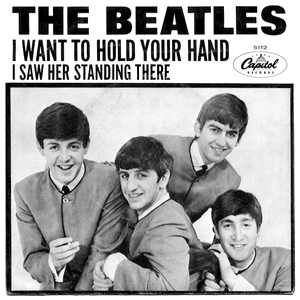On February 7, 1964 -- fifty-five years ago today -- four lads from Liverpool landed at JFK airport and took America by storm.
Coming just ten weeks after President Kennedy's assassination (and two months after Idlewild Airport's renaming in honor of the slain president), the Beatles arrival that day served for many as a tonic to the ills of the world.
Two days later, on February 9, the Beatles appeared on Ed Sullivan. Like Elvis's appearance before them, it was a crucial moment in introducing the band to a larger audience and a record 73 million people tuned in to watch them perform "All My Loving," "Till There Was You," "She Loves You," "I Saw Her Standing There," and "I Want to Hold Your Hand."
73 million people equaled about 40% of the TV audience that night. What were the others watching instead? Up against Ed Sullivan that night were The Wonderful World of Disney, The Travels of Jaimie McPheeters (starring a 12-year-old Kurt Russell), Imogene Coca in Grindl, and Arrest and Trial, the forerunner to Law and Order.
 |
| Three Beatles -- George Harrison was nursing a sore throat -- commandeer a carriage in Central Park for a publicity shoot |
On February 11, the band played its first U.S. concert at the Coliseum in Washington, D.C., then returned to New York for two shows at Carnegie Hall. (The shows ran a mere 35 minutes each!) The group appeared for a second time on Ed Sullivan on February 16, playing live via satellite from a hotel in Miami where they had retreated for a vacation Though they were only in the States for less three weeks, the trip had a lasting impact, unleashing the "British Invasion" and forever changing the face of pop music.
* * *
READ ALL ABOUT NEW YORK IN
Footprints in New York: Tracing the Lives of Four Centuries of New Yorkers
Footprints in New York: Tracing the Lives of Four Centuries of New Yorkers
and don't forget our first book










